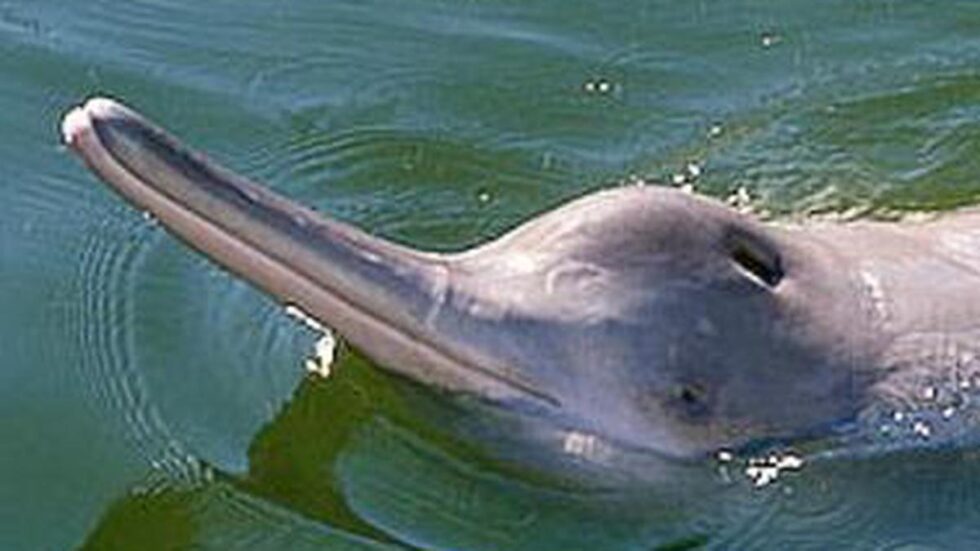
GUWAHATI A team of wildlife conservationists tagged the almost-blind Ganges river dolphin for the first time.
A healthy male river dolphin from Kulsi, a tributary of the Brahmaputra, was tagged and released under veterinary care. An initiative of the Ministry of Environment, Forest, and Climate Change, it was executed by the Wildlife Institute of India (WII) in collaboration with the Assam Forest Department and biodiversity conservation group Aaranyak.
The tagging under Project Dolphin is expected to help understand the dolphin’s seasonal and migratory patterns, range, distribution, and habitat utilisation, particularly in fragmented or disturbed river systems. Officials said the lightweight tags emit signals compatible with Argos satellite systems even with limited surfacing time and are designed to minimize interference with dolphin movement.
“The first-ever tagging of the Ganges river dolphin is a historic milestone for the species and India. This project funded by the National CAMPA Authority will deepen our understanding of conserving our national aquatic animal,” Environment Minister Bhupender Yadav said.
“Tagging river dolphins will contribute to evidence-based conservation strategies that are urgently needed for this species,” Virendra R. Tiwari, the director of WII said.
The Ganges river dolphin is unique for being nearly blind and relies on echolocation for its biological needs. India houses about 90% of the global population of the dolphin, historically distributed across the Ganga-Brahmaputra-Meghna and Karnaphuli river systems.
However, its distribution has drastically declined over the past century. Despite its wide range, significant knowledge gaps remain regarding this species due to its elusive behaviour. It surfaces for only 5-30 seconds at a time, posing a significant challenge in understanding its ecological needs and for any scientifically sound conservation interventions.
Vishnupriya Kolipakam, WII’s project investigator said the tagging was a significant advancement in understanding the ecological needs of river dolphins, which will help conserve critical habitats within these vast river ecosystems. “This is vital not only for aquatic biodiversity but also for sustaining thousands of people who depend on these resources,” she said.
Wildlife experts said ensuring the well-being of the Ganges river dolphin is crucial as it is an apex predator and serves as an umbrella species for the river systems.
Officials said plans are underway to extend the tagging initiative to other States inhabited by Ganges river dolphins to build a comprehensive understanding of their population dynamics and habitat requirements.







